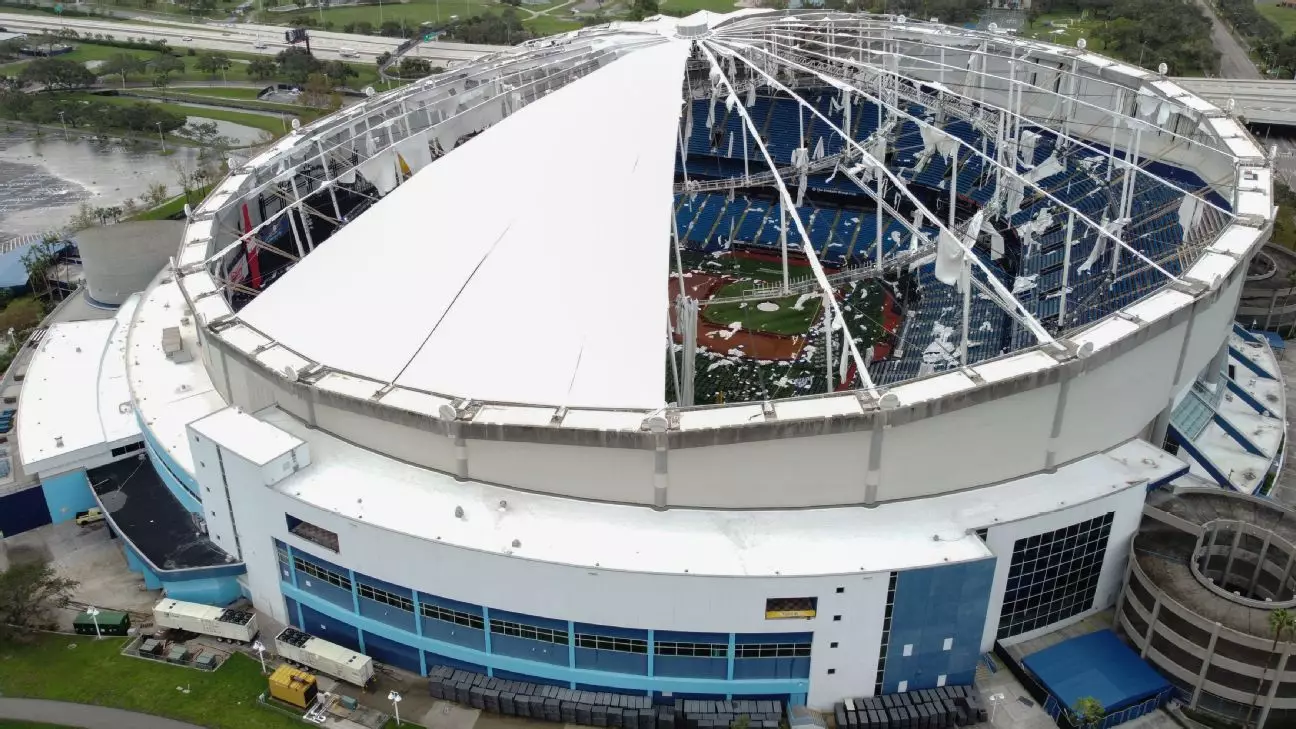In a significant step toward revitalizing their sports infrastructure, the St. Petersburg City Council unanimously approved a $22.5 million contract for the repair of Tropicana Field, the home of the Tampa Bay Rays. Following Hurricane Milton’s destructive winds that tore through the arena, this decision represents the city’s commitment to restoring its sports culture and entertaining its community. Despite the Rays’ recent withdrawal from plans for a new stadium, local leaders effectively communicated that addressing the critical damage at the Trop is grounded in a binding contractual obligation.
Council members, particularly Lissett Hanewicz, underscored that the legal agreements necessitate the immediate restoration of the stadium, making it clear that the priority now is to turn this promising ballpark situation around. It’s a bold move—a blend of both pragmatism and hope for a future that keeps Major League Baseball in the region. With the Rays having played at Tropicana Field since their establishment in 1998, the emotional ties between the team and its community enhance the importance of this undertaking.
The Impact of Hurricane Milton
Hurricane Milton, which made landfall with winds clocked at approximately 125 mph, exposed the vulnerabilities of Tropicana Field and forced the Rays to relocate their home games to Steinbrenner Field, a spring training venue for the New York Yankees. This shift marked an unprecedented moment for the franchise, reflecting not only the fierce power of nature but also the challenges ahead in maintaining the home base of a major league team. With fans from across the bay now gathering in a different stadium, the Rays carved out a strategic chance to reengage their audience in a new setting, achieving a commendable 4-2 record during this temporary arrangement.
Yet, this is not merely a sports story; it’s about community connection and resilience. The Rays’ swift adjustment resonates strongly with the tide of adversity faced by local residents. While many were grappling with hurricane-induced challenges, the managed transition drew support and attention from fans and city leaders alike, highlighting the symbiotic relationship between the team and St. Petersburg.
A Vision for the Future
Beyond the immediate repairs, which consist of a complex membrane roof scheduled for completion in about ten months, broader renovations will necessitate significant financial investment—estimated at around $56 million. These upgrades target essential elements such as the playing surface, concession stands, and enhancing audio-visual capabilities. Such an undertaking is vital—not only for the team’s operational success but also for cultivating a welcoming environment for fans.
Rays co-president Brian Auld expressed optimism regarding the collaborative efforts that have brought the city council to this pivotal juncture. The anticipated improvements convey the message that St. Petersburg is committed to innovation while valuing its historical roots—an effort that could revitalize the urban fabric where Tropicana Field stands proud.
Furthermore, as the city grapples with evolving financial strains and competing interests, the decision to fix the Trop reflects a strategic pivot rather than throwing in the towel. A sense of urgency in preserving a space that holds sentimental value for the community is palpable, and it speaks volumes about the determination to forge ahead despite obstacles.
Challenges and Considerations
However, the realities of maintaining a sports stadium in a rapidly changing urban landscape present challenges that cannot be ignored. The Rays’ withdrawal from the proposed $1.3 billion new stadium deal raises potent questions about profitability and fan loyalty in a market where competition for entertainment is fierce. The original vision for the new facility highlighted exciting opportunities for cultural development, such as housing and art installations tied to the historic Gas Plant district. Losing this ambitious concept may spark concerns about the long-term viability of keeping the team in St. Petersburg.
As city officials deliberate on what comes next for Tropicana Field and the franchise, maintaining the community’s love for baseball while keeping a finger on the pulse of evolving urban needs will prove critical. Whether the team can connect with its fan base as effectively in a repaired—but fundamental—Tropicana Field remains to be seen. That uncertainty looms over the ballpark and the dazzling potential that lies just beyond the horizon.

